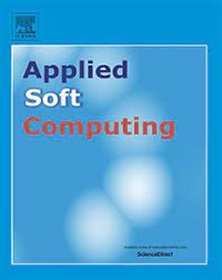Inter-block ladder-style transformer model with multi-subspace feature adjustment for object re-identification
IF 7.2
1区 计算机科学
Q1 COMPUTER SCIENCE, ARTIFICIAL INTELLIGENCE
引用次数: 0
Abstract
Object re-identification aims to retrieve specific objects across multiple cameras and has garnered significant attention. Currently, transformer-based methods have taken a dominant position. However, most approaches embed inherent transformer encoders for feature extraction directly. These methods handle all patch tokens uniformly, failing to distinguish salient and non-salient patch tokens for discriminative feature expression. To this end, this work proposes a novel inter-block ladder-style transformer (IBLSFormer) for object re-identification. Firstly, a multi-subspace feature adjustment (MSFA) module is designed to adjust the patch features via class-patch interaction in multiple subspaces including Euclidean distance subspace, cosine distance subspace, and KL divergence subspace. The MSFA module can enhance the salient patch tokens and weaken the non-salient patch tokens simultaneously to focus on discriminative patches. Afterwards, an IBLSFormer is designed by inserting MSFA modules with distinct configurations into the vision transformer. The narrow-to-wide ladder-style constraints are embedded in MSFA modules based on embedding depth to highlight the feature differences across different levels and ameliorate the feature learning. Our method achieves mAP/Rank-1 of 88.7%/95.3%, 81.4%/90.4%, 80.0%/97.1%, and 89.4%/83.6% on four object re-identification datasets. Extensive experiments show IBLSFormer is superior to other methods in learning discriminative and robust representations for object re-identification.
求助全文
约1分钟内获得全文
求助全文
来源期刊

Applied Soft Computing
工程技术-计算机:跨学科应用
CiteScore
15.80
自引率
6.90%
发文量
874
审稿时长
10.9 months
期刊介绍:
Applied Soft Computing is an international journal promoting an integrated view of soft computing to solve real life problems.The focus is to publish the highest quality research in application and convergence of the areas of Fuzzy Logic, Neural Networks, Evolutionary Computing, Rough Sets and other similar techniques to address real world complexities.
Applied Soft Computing is a rolling publication: articles are published as soon as the editor-in-chief has accepted them. Therefore, the web site will continuously be updated with new articles and the publication time will be short.
 求助内容:
求助内容: 应助结果提醒方式:
应助结果提醒方式:


